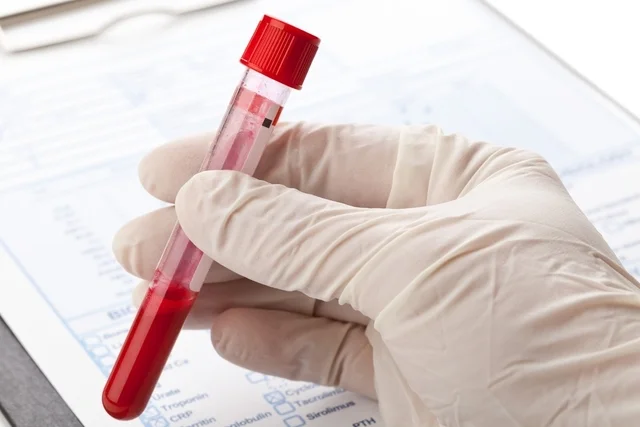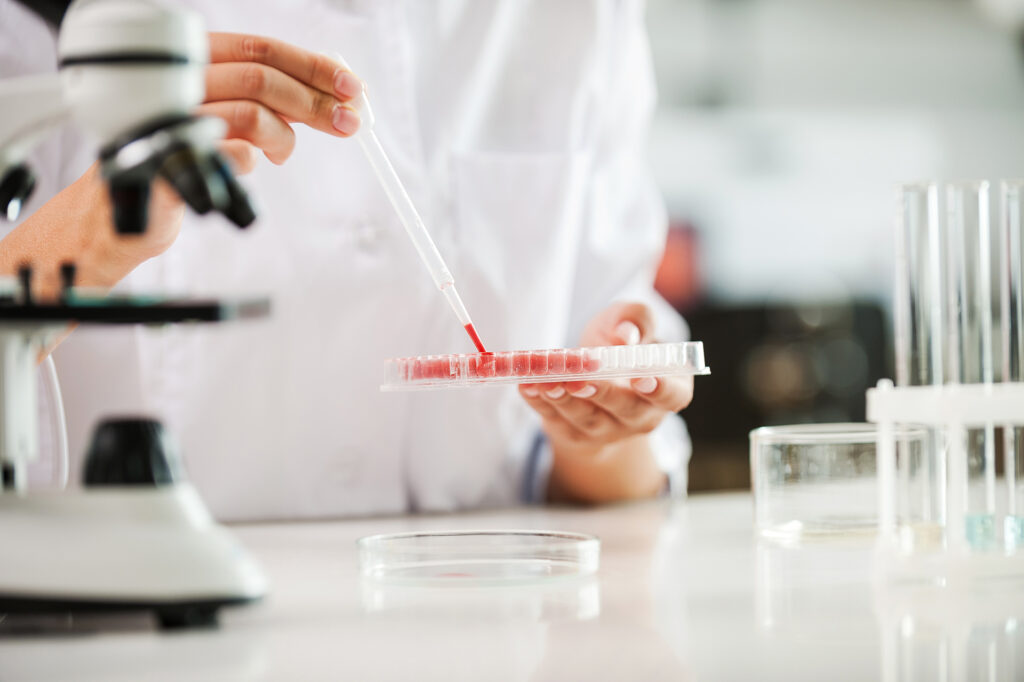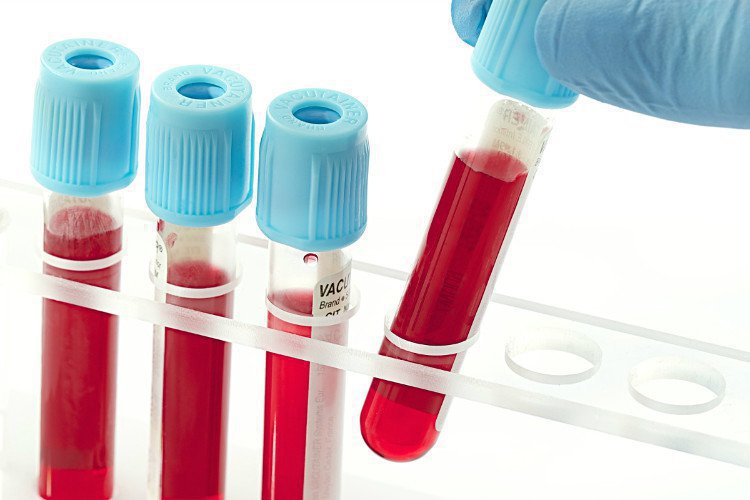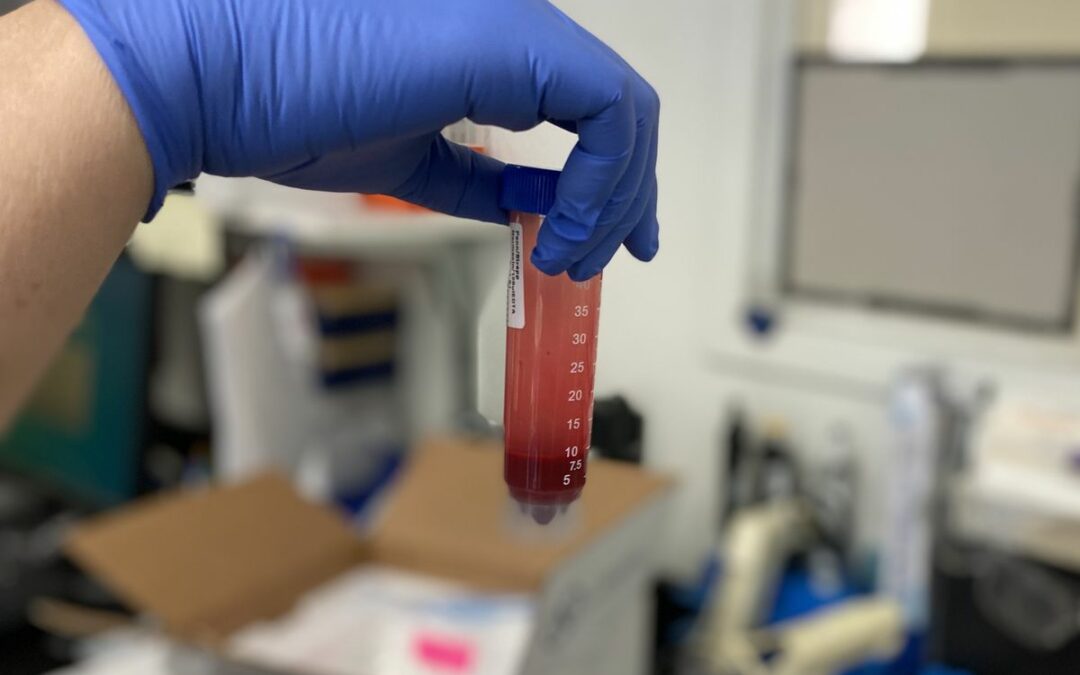Around 800 million people worldwide experience periods every day.
Given those figures, it is astonishing how little is understood about menstrual blood in general.
Doctor Sara Naseri founded the healthcare startup Qvin in an effort to alter that. She thinks testing this frequently disregarded monthly blood sample could provide revolutionary new health information.
It will take some time to support this theory, though, given there isn’t much research on menstrual blood.
Dr. Naseri, who is currently a medical student, could only find one study on monthly blood, a 2012 paper that defined its structure and content and discovered 385 proteins that are exclusive to menstrual blood.

Menstrual effluent includes endometrial cells, cervical mucus, and vaginal fluids in addition to blood. A membrane that lines the uterus called the endometrium grows thicker each month to facilitate embryo implantation. This lining is lost through the vagina if pregnancy doesn’t happen.
The most frequently used physiological fluid for medical decision-making is blood, according to Dr. Naseri. Women bleed every month, I reasoned. Why hasn’t this blood been used for medical purposes?
By conducting a wide range of tests to determine if there are any significant relationships between menstrual blood and blood drawn from a vein or pricked finger, the team at Qvin is attempting to close the research gap.
Although first findings have proven encouraging, more research is necessary.

Testing menstrual blood may become an effective way to monitor or diagnose a variety of common medical disorders if solid parallels can be established.
Menstrual blood testing could be utilized as a monthly way to monitor cardiovascular diseases or diabetes, for instance, if it is discovered that the biological markers for cholesterol or blood sugar levels are equal.
The true potential, though, rests in developing non-invasive techniques for identifying and treating illnesses that damage the female reproductive system.
Female reproductive illnesses are poorly understood, which has led to lengthy diagnosis processes, a dearth of effective treatments, and patient-suffering tests that are frequently uncomfortable and upsetting.
Even though evidence indicates that 31% of women have serious problems with their reproductive health, just 2.1% of medical research money in the UK is allocated to reproductive illnesses.
Less than half of individuals who are afflicted will go to a doctor.
Menstrual blood testing requires overcoming a lot of opposition and societal taboos in addition to a lack of study and precedent.
startup situated in Berlin Finding a lab partner willing to analyze menstruation blood samples was difficult for Theblood.
“Everything must be done from scratch, from the very beginning. Menstrual blood cannot be tested in laboratories; only saliva, urine, or stool samples can, according to Miriam Santer, co-founder of Theblood.

The co-directors of the Rose study are Peter Gregersen and Christine Metz.
Dr. Christine Metz, a professor and endometriosis researcher at Northwell Health on Long Island, New York, thinks that a “yuck factor” plays a significant role in the lack of research on period blood.
I had several doctors inform us that they can’t ask their patients to do that when we set out to collect menstrual effluent to examine it, she says. “However, after posting a call on social media, we received 6,000 names for our registry. They obviously progressed beyond the gross factor.
Clinical gynecology has never included the testing of menstrual blood.
One of the most prevalent gynecological disorders is endometriosis. It happens when tissue that usually lines the uterus grows on the outside of other organs in the pelvic cavity. It is quite uncomfortable. About 10% of women and girls are affected by it. Surgery is the only way to confirm the diagnosis, which can take up to 12 years.

Endometriosis has no proven viable treatments as of yet.
As a result of the awareness-raising efforts of well-known activists like Lena Dunham and Padma Lakshmi, things are gradually improving.
Even a hysterectomy does not ensure the elimination of endometriosis lesions, as pain is currently managed with medicines that have serious adverse effects.
Christine Metz is a member of the team leading the Rose (Research Outsmarts Endometriosis) study, which examines menstrual effluent in an effort to hasten endometriosis diagnosis and create effective treatments.
Finding financing for the study of menstrual blood has proven to be challenging. I frequently hear the statement, “Oh, you should work in cancer. There is significantly more money. And it’s accurate. Simply said, there isn’t enough money for this. Although it’s really, extremely, extremely difficult, it’s worth it to fight constantly to acquire a cent, she claims.

In the belief that proving menstrual blood tests have value as a consumer good will be the quickest way to force change, businesses like Qvin and Theblood are using venture capital investment to pay for their investigations.
However, everyone acknowledges that describing the fundamentals of menstruation, such as how tampons, sanitary pads, and menstrual cups are used, is frequently part of making a case to investors.
Miriam Santer and Isabelle Guenou of the blood team had trouble finding a lab partner to analyze menstrual blood.
Testing for various conditions would be much more convenient with home testing options.
Ashley Draper, 36, of Washington, DC, responded to an Instagram advertisement and enrolled in a Qvin study to see whether menstrual blood might be used to detect cervical cancer.
Ms. Draper has had to undergo routine cervical cancer screenings every six months for more than ten years due to abnormal smear test findings.
In order to collect cell samples from the cervix at the opening to the uterus during a cervical cancer test, a doctor will use a speculum to open the vagina. In most cases, no pain alleviation is provided.
“It’s obviously a very invasive process,” Ms. Draper explains. “Even though you are there to work with the doctor, you kind of feel like a slab of meat on a table when it comes to really going through the operation. They simply seem to be employing incredibly antiquated procedures.
Ms. Draper finds it intriguing to lower the high cost of care and feel more in control of health outcomes. If this is made into a product, I will feel less anxious and have more control over the testing process, therefore I see it as a win all around.
Download The Radiant App To Start Watching!
Web: Watch Now
LGTV™: Download
ROKU™: Download
XBox™: Download
Samsung TV™: Download
Amazon Fire TV™: Download
Android TV™: Download

